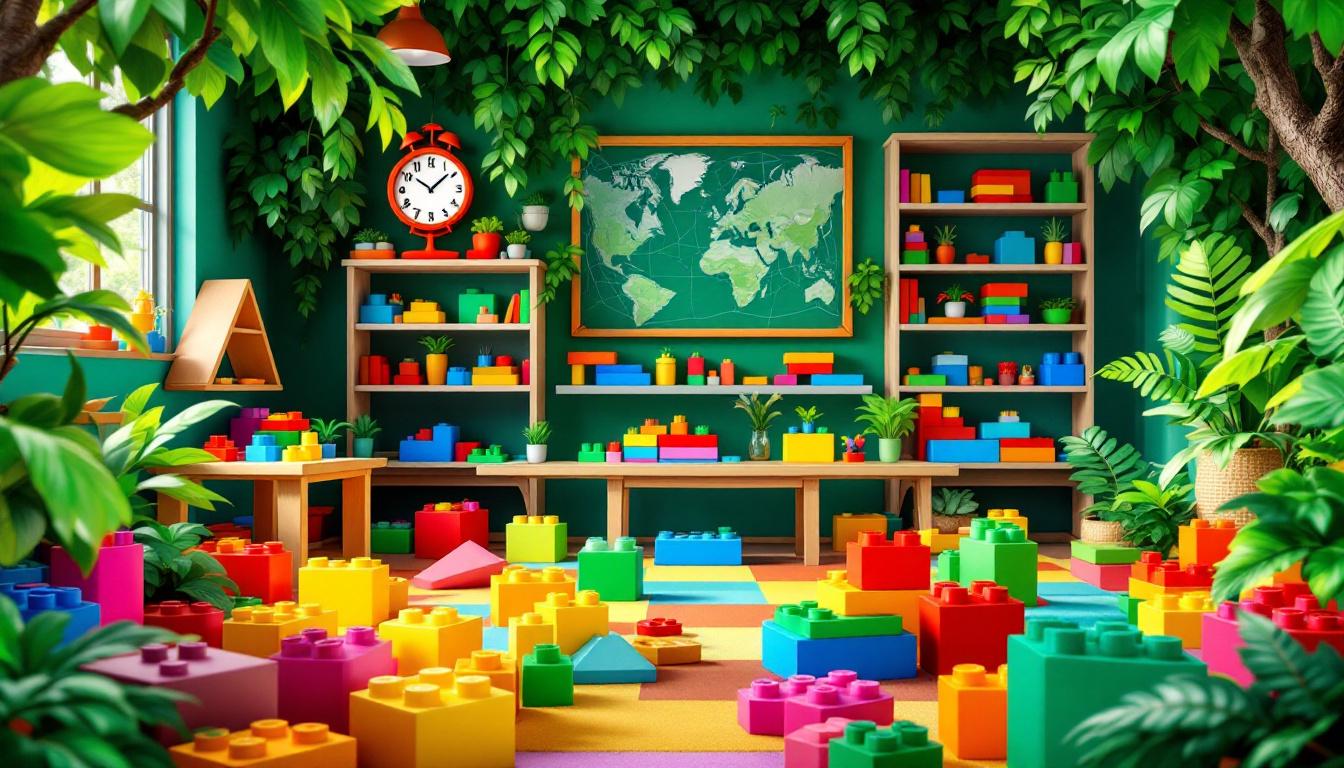
How to teach spatial awareness through play
Enhancing Childhood Development with Playful Spatial Learning
Unlocking the Power of Play in Developing Spatial Skills
Spatial awareness is a fundamental aspect of childhood development, encompassing a child's ability to understand their position and movement in space relative to objects and people around them. By integrating various play-based activities into their daily routines, parents, teachers, and caregivers can significantly foster spatial skills, which are vital for safety, coordination, academic achievement, and future STEM success. This article explores effective strategies, activities, and educational approaches to teaching spatial awareness through play, supported by research and practical insights.
Understanding Spatial Awareness in Child Development
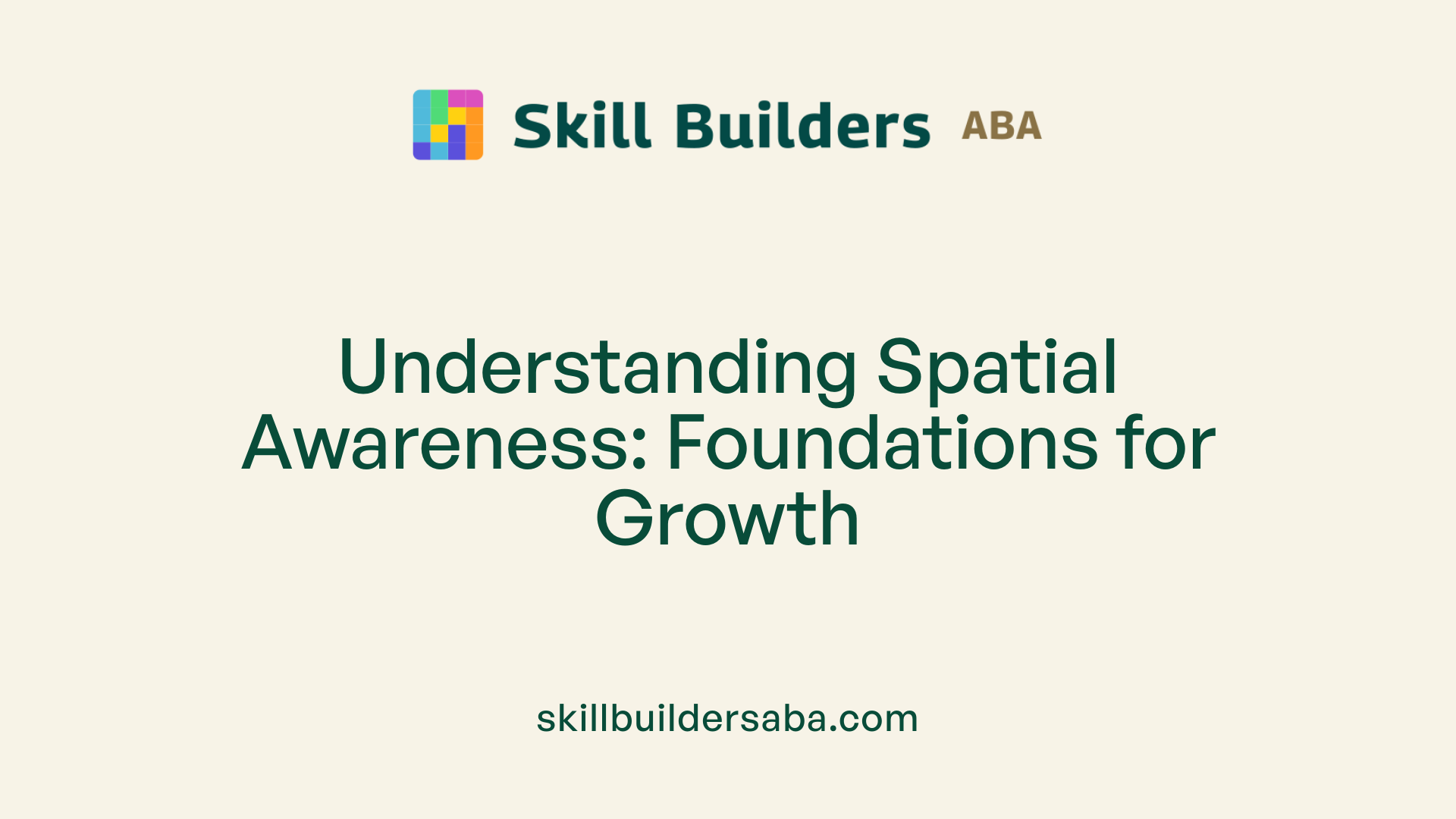
What is spatial awareness as related to play and child development?
Spatial awareness refers to a child's ability to understand the positions and orientations of their body and objects around them. It is a vital skill that influences motor coordination, problem-solving, and understanding of the physical world.
Children develop these skills naturally through various play activities. For example, navigating obstacle courses, building with blocks, and completing puzzles are practical ways they learn how objects relate in space.
Engaging in such activities enhances their understanding of concepts like distance, direction, and object placement.
Educational media can further support this development. Programs like "Dora the Explorer" incorporate interactive tasks that challenge children to think about spatial relationships. Studies have found that children who watch and interact with these programs tend to show improved spatial reasoning skills.
By integrating play and educational resources, parents and educators can foster a strong foundation in spatial awareness, which is crucial for future success in areas such as math, science, and everyday tasks.
Why are spatial skills important for children's development and learning?
Spatial skills are foundational for many aspects of a child's growth. They are essential for tasks like handwriting, geometric understanding, and following directions.
Children with well-developed spatial awareness are better equipped to succeed in STEM subjects because they can visualize problems and manipulate shapes mentally.
Furthermore, spatial competence supports daily activities like navigating through spaces, organizing objects, and understanding spatial language.
Research indicates that early spatial skill development correlates with later academic achievement. For example, children who practice spatial reasoning tend to perform better in math tests and have improved problem-solving abilities.
These skills also underpin physical activities, contributing to overall coordination, balance, and safety.
How does play promote spatial understanding?
Play is perhaps the most effective way to nurture spatial awareness in children. Active, hands-on activities allow children to explore spatial concepts naturally.
Constructive play with blocks, engaging in movement games, and solving puzzles stimulate mental manipulation of shapes, sizes, and spatial relationships.
Simple activities like setting a table or arranging furniture introduce vocabulary and concepts related to position and direction.
Games like "Simon Says" or obstacle courses challenge children to coordinate their bodies and think about spatial cues.
Art projects such as drawing or origami require visualization and mental rotation of shapes, reinforcing spatial perception.
In short, play-based learning creates a dynamic environment where children practice and internalize spatial concepts essential for their overall development.
Engaging Activities That Promote Spatial Skills
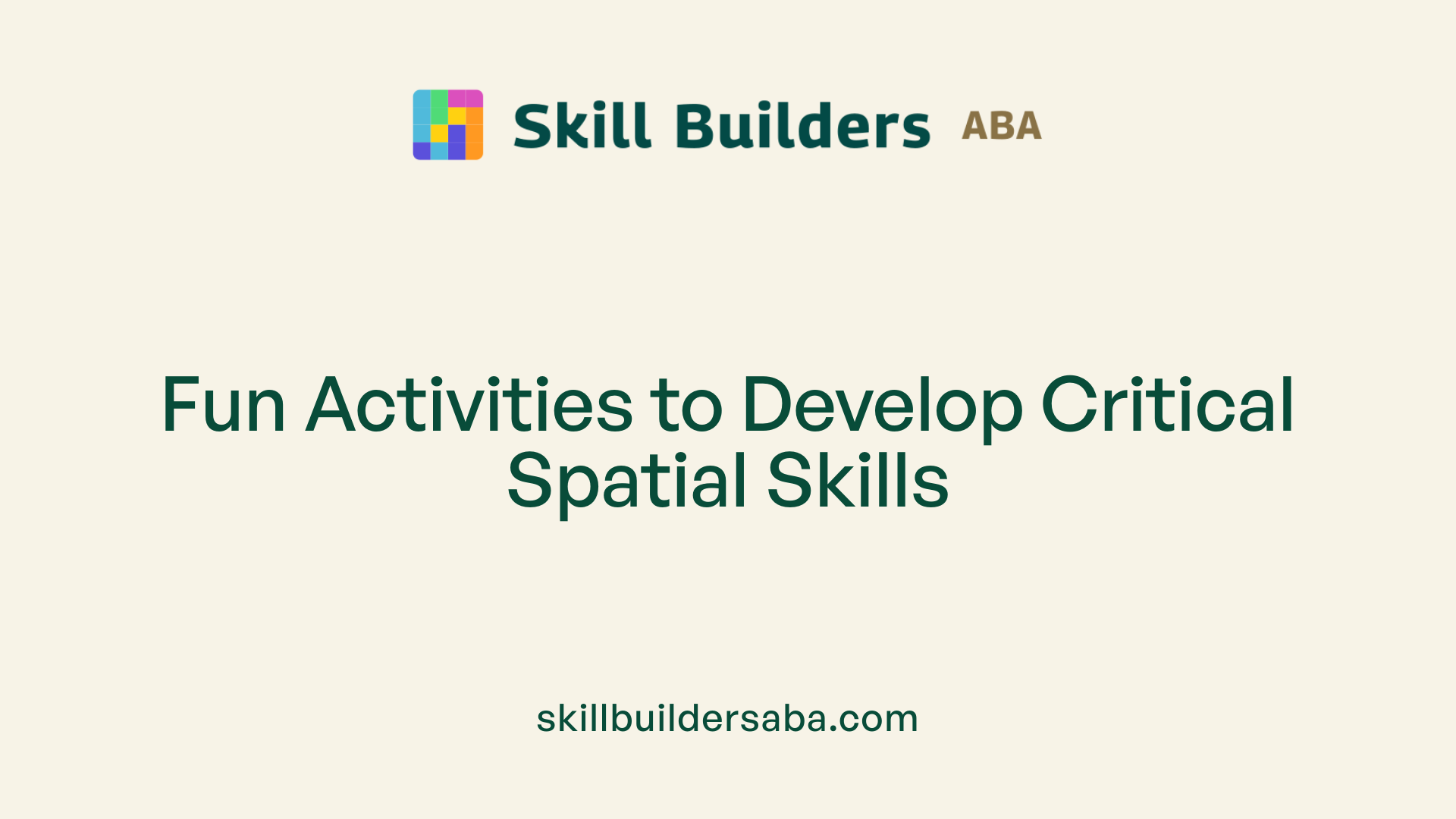
How do children demonstrate spatial awareness?
Children display their spatial awareness through their ability to understand where they are in space relative to objects and others. This skill allows them to move safely, follow directions, and coordinate movements during play and daily routines.
They often show their grasp of space by reaching for or avoiding objects, navigating through crowded areas, organizing their belongings, and playing sports. Activities that involve drawing, puzzles, maps, or building help children understand spatial relationships and improve their perceptual and motor skills.
Engaging in these activities enhances their confidence in moving within their environment, allows better coordination, and teaches them how to judge distances accurately. Developing strong spatial awareness is crucial for their overall growth, supporting safe interactions and successful learning in many areas.
Activities like block play, puzzles, obstacle courses, and movement games
Various activities are effective in cultivating spatial skills. Building with blocks and construction toys like Lego or Jenga promotes understanding of shapes, sizes, and how objects fit together.
Puzzles, including shape puzzles and jigsaws, help children recognize how different pieces relate and solve complex spatial problems as they grow.
Obstacle courses challenge children to navigate through different spaces, requiring them to think about their body's position relative to obstacles, fostering spatial planning and body control.
Movement games, such as 'Red Light, Green Light' or 'Simon Says,' require children to follow spatial cues and control their movements, enhancing body awareness and coordination.
Indoor and outdoor spatial activities
Indoor activities include crafting that involves cutting, coloring inside lines, and arranging objects in specific patterns or designs, reinforcing spatial perception.
Playing board games like Connect Four or chess stimulates strategic thinking about spatial relations, while toys like shape sorters develop recognition of geometric forms.
Outdoor activities involve exploring shapes in the environment, such as shape walks or scavenger hunts, which help children identify shapes and understand scale.
Physical activities like hopscotch, climbing on playground equipment, or running through an obstacle course develop gross motor skills along with spatial awareness.
Creating a safe and engaging environment, both inside and outside, provides children with numerous opportunities to understand and navigate space effectively, laying a foundation for later academic and life skills.
Sport, Movement, and Physical Play in Spatial Learning
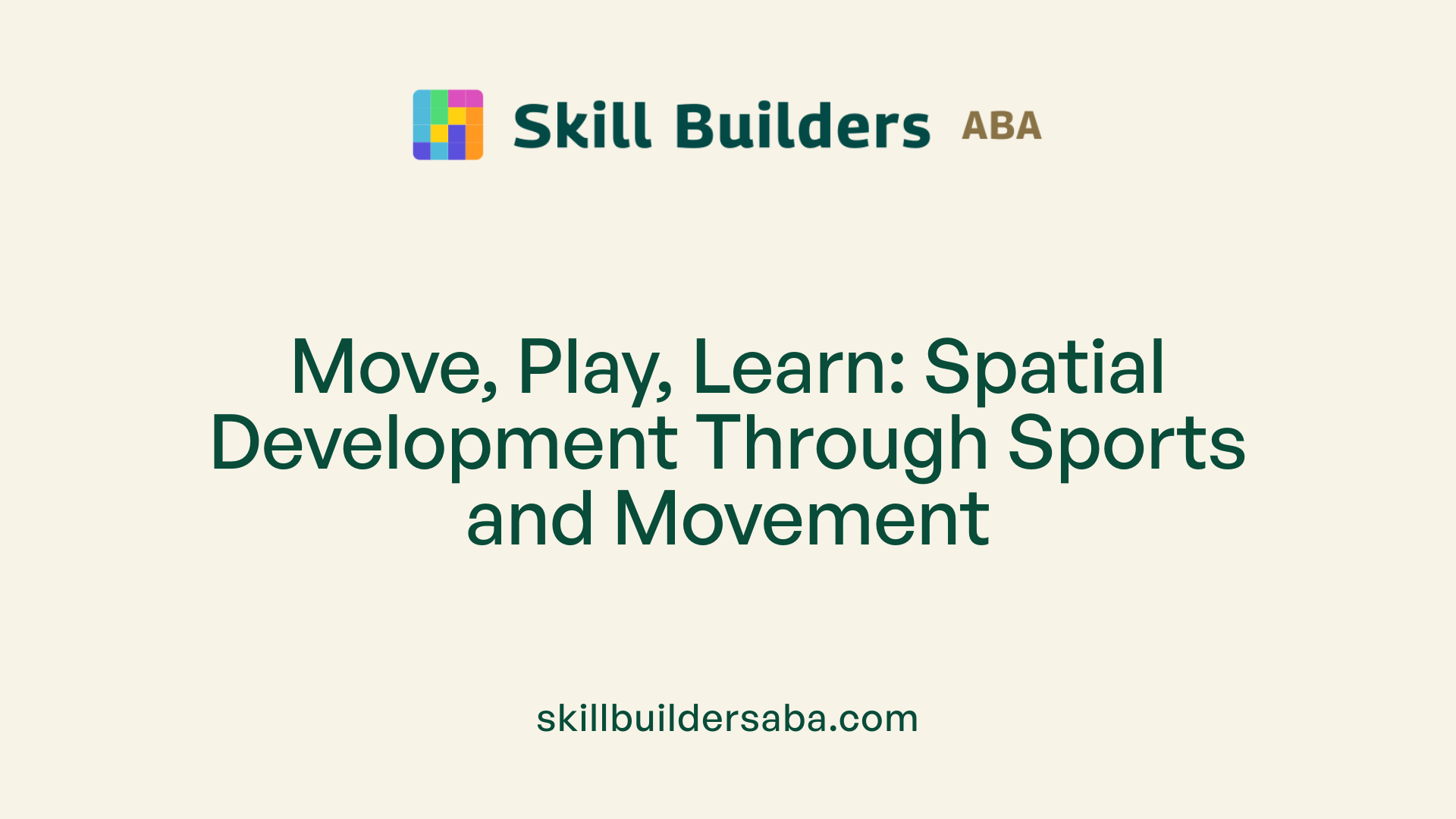
How do sports like volleyball, soccer, and basketball improve spatial perception?
Participating in team sports such as volleyball, soccer, and basketball plays a significant role in enhancing a child's awareness of space. These activities require children to understand the positions of their teammates, opponents, and the ball in a three-dimensional space. As children anticipate movements, judge distances, and coordinate their bodies with others, they develop a better grasp of object and body spacing. Such experiences help children learn to navigate crowded areas and improve their overall spatial judgment.
What are movement games like 'Red Light, Green Light' and their benefits?
Movement games like 'Red Light, Green Light' are simple yet effective for developing coordination, balance, and spatial awareness. In this game, children learn to control their movements according to cues, which sharpens their ability to judge space and position in relation to others. It encourages attentive body control, helps children understand spatial boundaries, and refines their ability to start and stop movements accurately, all of which are fundamental to spatial reasoning.
How does yoga and active exploration foster spatial awareness?
Yoga promotes spatial awareness by guiding children to focus on their body positions, movements, and breathing in a calm and mindful manner. It encourages them to understand the relationship between different parts of their body and develop a sense of internal spatial orientation.
Active exploration, such as crawling, climbing, or navigating obstacle courses, adds a dynamic element to spatial learning. These activities require children to use their bodies in various ways, enhancing sensory processing and body awareness.
Engaging in these physical activities supports sensory regulation and mindfulness, which are essential for developing a strong understanding of spatial relationships. Together, yoga and active exploration foster not only spatial skills but also emotional regulation, focus, and confidence in movement.
The Role of Cognitive and Art-Based Activities
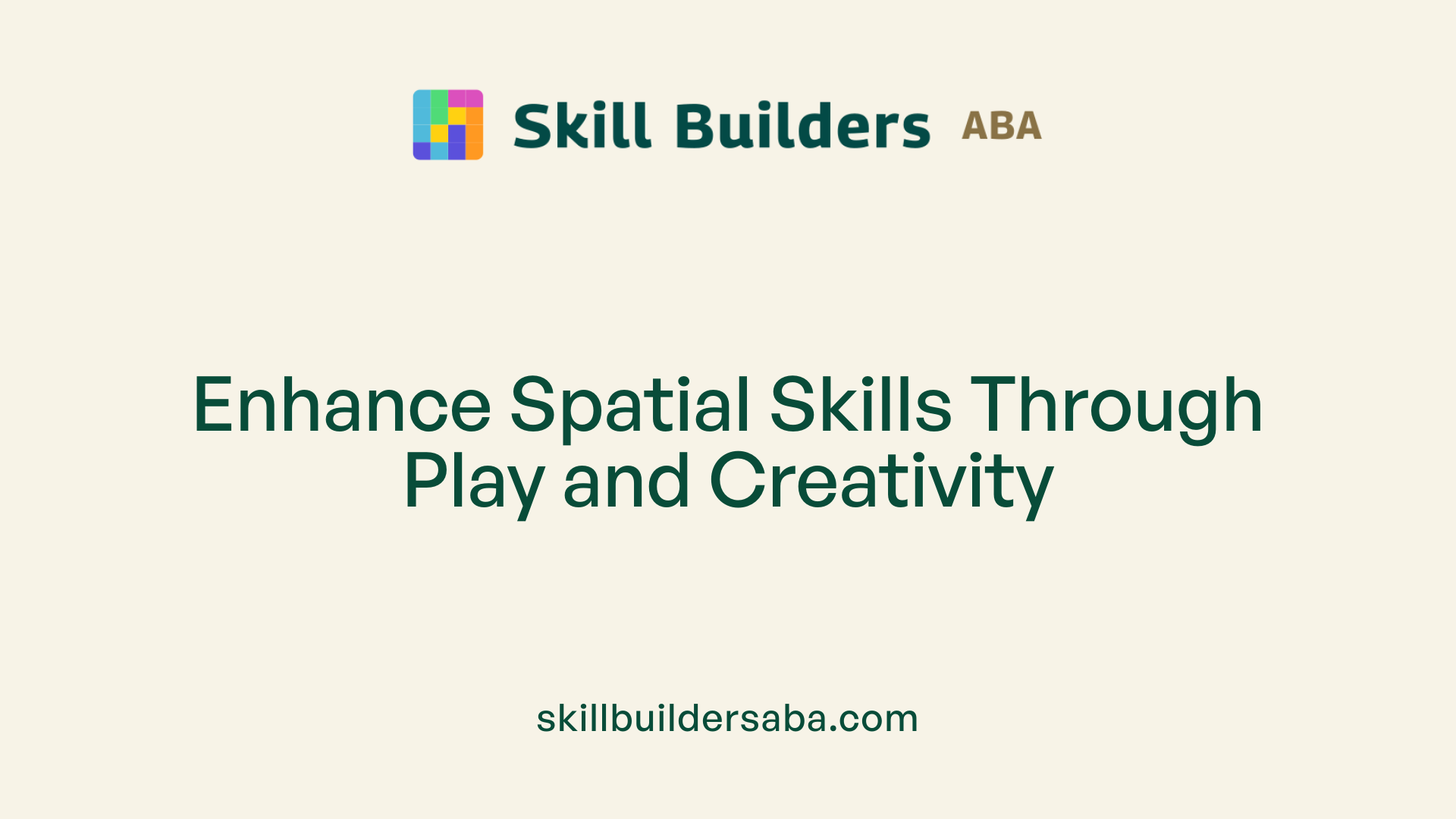
What are examples of play-based activities that enhance spatial skills in children?
Engaging children in various playful activities significantly boosts their spatial abilities. Building with blocks and construction toys like Lego or Jenga allows children to learn about different shapes, sizes, and how objects fit together in space. These activities foster understanding of object positioning and spatial relationships.
Climbing, crawling, and navigating obstacle courses are excellent movement-based activities. They help children become aware of their bodies in three-dimensional space, improving coordination and spatial awareness.
Outdoor play also offers rich opportunities for spatial development. Making dens, exploring natural environments, or participating in natural object hunts help children recognize patterns, measure distances, and understand spatial relationships in real-world settings.
Shape puzzles and shape-sorter games are particularly effective for recognizing geometric forms and understanding how different shapes can fit within boundaries. These puzzles promote visual-spatial reasoning skills.
Community walks or outdoor games, such as skittles or tag, allow children to observe and understand the relationships between objects and space around them, enhancing problem-solving and spatial perception.
How does drawing and sketching shapes improve spatial understanding?
Drawing and sketching shapes help children visualize and internalize geometric concepts. When children trace or create shapes like circles, squares, triangles, or rectangles, they develop an understanding of form, size, and proportion. Sketching shapes from different perspectives enhances their spatial visualization skills.
Making diagrams and simple blueprints of objects or spaces encourages children to think about spatial relations and relative positions. For example, sketching a room layout or a garden plan helps them grasp how different elements relate to each other in space.
How do origami and tangrams develop mental visualization?
Origami involves folding paper into complex shapes, which trains children to visualize how flat patterns transform into 3D objects. This activity bolsters spatial reasoning, planning, and mental rotation skills.
Tangrams—a puzzle consisting of seven geometric pieces that fit together to form various shapes—enhance spatial visualization, pattern recognition, and problem-solving. Children learn to mentally manipulate pieces, judge how they fit, and create new images, all vital components of spatial intelligence.
How is map reading and spatial language used in educational settings?
Teaching children to read maps of familiar spaces, like their school or neighborhood, improves their ability to interpret spatial information. Using simple directions and encouraging children to justify their spatial decisions foster verbal and conceptual understanding of spatial relationships.
In classroom activities, discussing positional words such as 'above,' 'below,' 'next to,' or 'behind' helps children develop precise spatial language. Incorporating these terms into storytelling, drawing, or physical activities reinforces their understanding.
Why is visual-spatial reasoning important in science and social studies?
Strong visual-spatial skills are essential for understanding scientific concepts such as anatomy, physics, and geology. Sketching diagrams, interpreting graphs, and creating models require the ability to mentally manipulate objects and understand spatial relationships.
In social studies, map reading, understanding geography, and visualizing spatial arrangements of historical sites or ecosystems rely heavily on spatial reasoning. Activities like creating maps or spatial diagrams enrich students' comprehension of spatial aspects in science and social science contexts.
| Activity Type | Focus Area | Benefits | Examples |
|---|---|---|---|
| Building blocks | Construction & Shapes | Develops understanding of shapes, sizes, and spatial positioning | Recreating blueprints, matching designs |
| Puzzles & Tangrams | Visual-spatial reasoning | Improves problem-solving and mental manipulation of objects | Shape puzzles, pattern building |
| Drawing & Sketching | Geometry & spatial relations | Enhances visualization skills and understanding of spatial forms | Drawing objects from different perspectives |
| Origami | 3D visualization | Strengthens mental rotation and planning skills | Folding paper into complex shapes |
| Map Reading | Spatial language & orientation | Boosts navigation skills and spatial vocabulary | Interpreting indoor and outdoor maps |
| Art & Crafts | Shapes, sizes, & spatial concepts | Fosters creativity along with spatial understanding | Drawing scenes, creating layouts |
Fostering these activities in classrooms or at home supports the development of critical spatial skills that underpin success in science, social studies, and everyday problem-solving.
Using Play to Foster Spatial Language and Concepts
How can educators and caregivers support children's spatial development through play?
Supportive play environments are essential for developing children's spatial awareness. Educators and caregivers can foster this growth by offering diverse activities that encourage movement, spatial exploration, and hands-on learning. Building with blocks and engaging in puzzles are foundational, as they help children understand shape, position, and spatial relationships.
Creating a safe, open space allows infants and young children to move freely. This natural movement promotes muscle development, body awareness, and coordination—all vital components of spatial understanding. For example, obstacle courses or movement games like 'Red Light, Green Light' challenge children to navigate and judge space, strengthening sensory and proprioceptive skills.
In addition, activities such as sorting objects, dressing up, and pretend play help kids grasp concepts of position, distance, and orientation. During these activities, children learn to negotiate space, recognize spatial relationships, and apply these skills in everyday contexts.
Caregivers should observe children during free play to identify opportunities to introduce new spatial ideas. For example, pointing out that a toy is ‘behind,’ ‘next to,’ or ‘above’ helps solidify spatial language.
Integrating simple, familiar objects into play, such as stuffed animals, toy cars, or household items, can serve multipurpose roles in teaching positional words. For instance, using a dollhouse scene to place furniture according to directions enhances understanding of spatial concepts.
The importance of spatial language in communication and understanding
Spatial language—words like 'in,' 'on,' 'under,' 'beside,' and 'between'—is crucial for effective communication.
Children who understand and use these terms can more accurately describe their environment, follow directions, and develop problem-solving skills. Early use of spatial language in play and conversation lays the groundwork for complex reasoning, literacy, and academic success.
When educators consistently incorporate spatial vocabulary into daily activities, children become more aware of their surroundings and how objects relate within space. This comprehension supports their overall cognitive development and prepares them for future learning in math, science, and technology.
Practical ideas like play scenes, books, and props to reinforce spatial concepts
Creating themed play scenes, such as a farm, kitchen, or store, provides a rich context to practice spatial relationships. For example, children can decide where to place animals, furniture, or items based on positional instructions.
Storybooks with illustrations depicting spatial concepts are excellent for visual reinforcement. Reading stories that describe characters moving 'inside,' 'outside,' or 'around' objects encourages children to visualize these relationships.
Props like dolls, toy vehicles, or counters allow children to physically manipulate objects to understand concepts like ‘behind,’ ‘in front of,’ or ‘next to.’ Incorporating puzzles and shape sorters also boosts their ability to recognize shapes and positions.
Incorporating games such as ‘search and find’ in picture stories or setting up obstacle courses with clear directional cues further solidifies spatial language. These activities are engaging and allow children to learn through play, making abstract concepts concrete and accessible.
By integrating everyday objects, stories, and playful scenarios into routine activities, educators and caregivers can effectively nurture children's spatial vocabulary and understanding—an essential step towards their holistic developmental journey.
Supporting Children with Spatial Difficulties and Diverse Needs
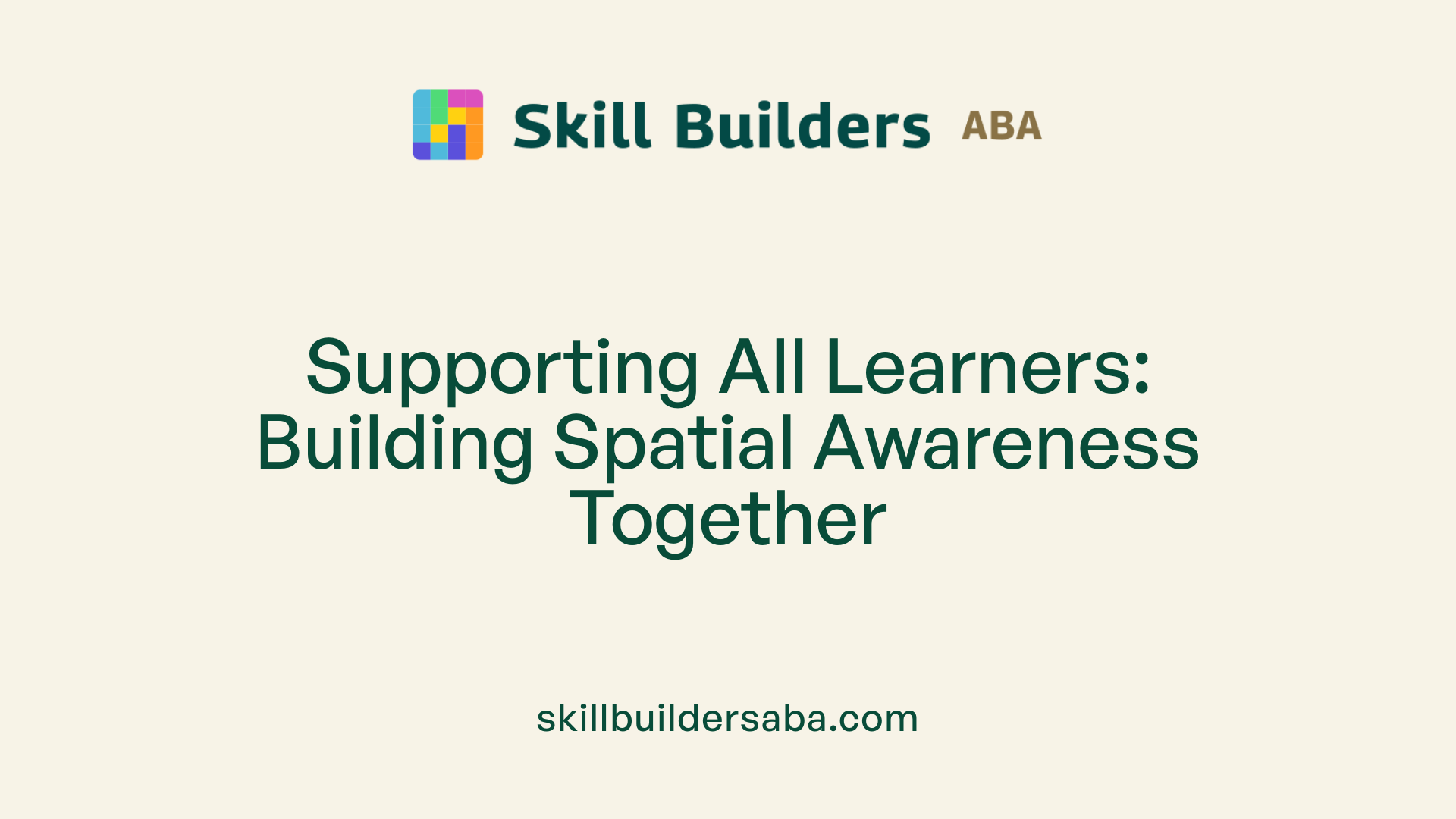
Recognizing signs of difficulties and how play can address them?
Early signs of challenges in spatial awareness often include children having trouble organizing objects, bumping into furniture or other people, struggling with puzzles or following directions related to space, and invading personal zones during social interactions.
Children with conditions such as sensory processing disorder, autism spectrum disorder, dyspraxia, cerebral palsy, Turner's syndrome, and non-verbal learning disorder may exhibit specific difficulties in perceiving and navigating spatial relationships.
Play-based activities serve as effective tools to support and improve these skills. Incorporating obstacle courses helps children practice maneuvering through spaces, while movement games like 'Red Light, Green Light' enhance coordination and body awareness.
Puzzles, shape-sorters, and block-building activities promote visual-spatial skills and understanding of object positioning.
Early detection of spatial perception issues allows for timely and tailored interventions. When activities are adapted to meet individual needs, children can develop confidence and spatial understanding more effectively.
Significantly, engaging in these playful activities fosters social inclusion and helps children participate more actively with their peers, laying a foundation for improved spatial skills and overall development.
Fostering Spatial Skills for Lifelong Success
Incorporating play-based activities to teach spatial awareness is a vital strategy for early childhood development. Whether through building structures with blocks, navigating obstacle courses, engaging in movement and sports, or exploring art and puzzles, children gain not only essential spatial skills but also confidence and curiosity. Educators and caregivers have a crucial role in creating supportive environments that promote exploration and understanding of space, both indoor and outdoor. Using language-rich, inclusive, and varied activities ensures that all children, including those with spatial challenges, benefit from playful learning. As research underscores the importance of spatial skills across subject areas, especially STEM, deliberate integration of these activities into everyday routines will prepare children for lifelong learning and success.
References
- Top 10 Spatial Awareness Activities for Children - NAPA Centre
- Top 10 Spatial Awareness Activities for Children - NAPA Center
- Improving spatial skills in children and teens: 12 evidence-based tips
- How to Target Spatial Concepts through Play
- Block play | Spatial awareness - Community Playthings
- Developing Spatial Awareness Through Kindergarten Play
- Spatial awareness with infants and toddlers - Child & Family ...
- The Best Spatial Awareness Toys and Activities - The OT Toolbox
- How to Foster Spatial Skills in Preschool and Elementary Students
- How to Teach Spatial Concepts Using 7 Hands-On Activities
Reach Out Today
Learn more about how we can support your child’s growth and development. Contact us to discuss our services and availability in your area.
.svg)